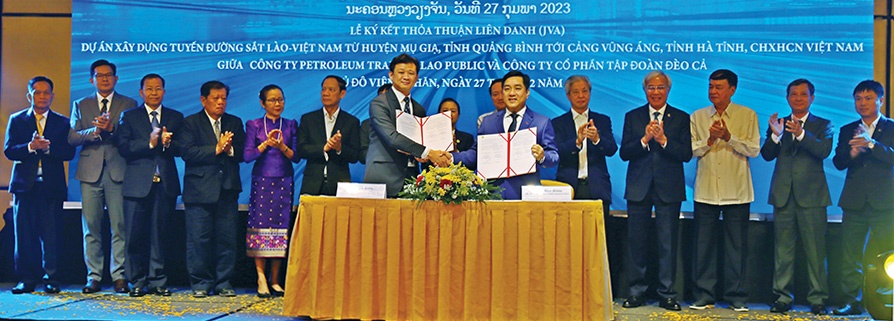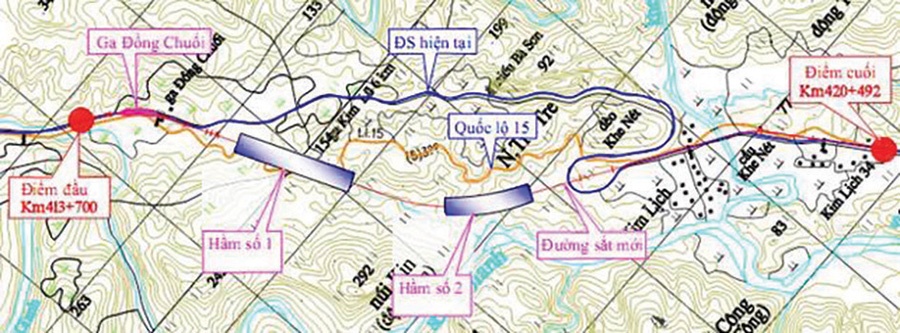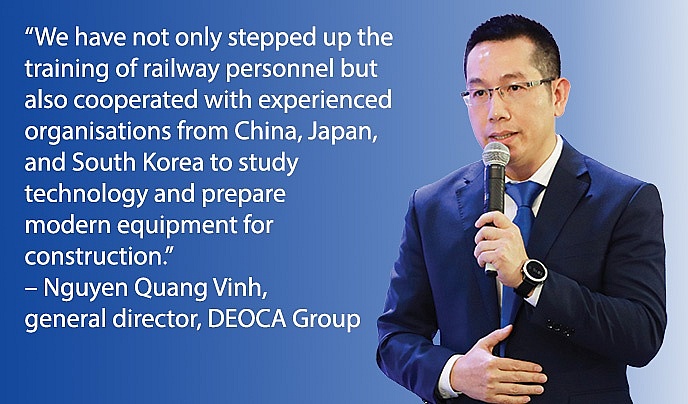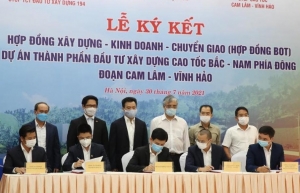DEOCA Group paving the way in transport
 |
At the end of last year, the Railway Management Unit under the Ministry of Transport (MoT) announced that a joint venture between DEOCA Group and South Korea’s IlSung Construction would be the contractor for construction package XL01.
The venture will build two railway tunnels as part of the Khe Net Pass renovation project on the Hanoi-Ho Chi Minh City railway line, with a winning bid of around $22.6 million. Tunnel 1 has a length of 620m, which is anticipated to be completed within two years. Meanwhile, Tunnel 2 spans almost 400m, with construction lasting just over one year. Both tunnels have a width of 10m and are designed following level 1 railway tunnel standards.
Package XL01 is one of several main packages set up for the railway line venture. It is funded by official development assistance and counterpart capital from the Vietnamese government. The package was conducted under limited international bidding.
To win the bidding, the DEOCA-IlSung joint venture surpassed two others from South Korean and Vietnamese contractors. By renovating the mountain pass into mountain tunnels, the completed project will help improve railway infrastructure, enhance speeds, shorten travel times, and ensure safe and smooth traffic on the Hanoi-Ho Chi Minh City railway. This is in line with both the approved master plan for Vietnam’s railway transport strategies both for this decade and towards 2050.
Kicking off Vietnam-Laos railway
 |
A couple of months previously in October 2023, the MoT approved a joint venture between DEOCA Group and Petroleum Trading Lao Public Company as the proposed investor for the Vietnam-Laos railway line, covering the Vung Ang, Tan Ap, and Mu Gia railway sections.
The joint venture is to prepare proposal documents and pre-feasibility study reports in the form of a public-private partnership.
The Vietnam-Laos railway line has a total length of 554.7km, stretching across the territories of both nations. The line will be standard gauge with a maximum speed of 150km per hour and funding of $6 billion.
The Mu Gia-Vung Ang railway section has a length of 103km and eight stations, including one main and seven intermediate stations, and that will cost $1.12 billion. The railway line connects Vientiane to Vung Ang Seaport and links with the Chinese-Laos railway, which is expected to create an expanded cargo transport route to northern Laos and southern China.
According to the MoT’s official dispatch, the DEOCA-Petroleum Trading Lao joint venture is responsible for submitting project proposal documents to the Railway Management Unit by October 2024.
DEOCA Group was not the first one interested in the Vientiane-Vung Ang railway. However, since it began to engage in the research, the project has witnessed more positive signals after many years of stagnation.
Preparing resources for railway
 |
Nguyen Quang Vinh, general director of DEOCA Group, said, “Besides highway projects, we have identified investment in railway infrastructure as its new direction in the next 5–10 years.”
In anticipation of high-speed railway and metro lines, the group has cooperated with universities to enrol and train high-quality human resources in the railway industry since 2023. The partnership model includes ordering personnel at the source and on-site training.
“We have not only stepped up the training of railway personnel but also cooperated with experienced ogranisations from China, Japan, and South Korea to study technology and prepare modern equipment for construction, strengthening organisational capacity for bidding,” Vinh added.
DEOCA Group has also cooperated with Sany and PowerChina specialising in equipment and technology for transport infrastructure construction. Through the tie-ups, the group aims to implement high-speed rail infrastructure projects and urban railways, organise factory tours, learn operating procedures, and optimise production.
 | Vietnam signs contract of third PPP section of North-South Expressway The Ministry of Transport, DeoCa Group, and a consortium of investors on July 30 signed a build-operate-transfer (BOT) contract for the Cam Lam-Vinh Hao section of the Eastern Cluster of the North-South Expressway. |
What the stars mean:
★ Poor ★ ★ Promising ★★★ Good ★★★★ Very good ★★★★★ Exceptional
Related Contents
Latest News
More News
- Businesses ramp up production as year-end orders surge (December 30, 2025 | 10:05)
- Vietjet chairwoman awarded Labour Hero title (December 29, 2025 | 13:06)
- How to unlock ESG value through green innovation (December 29, 2025 | 10:03)
- AI reshapes media and advertising industry (December 29, 2025 | 08:33)
- FPT and GELEX sign deal to develop blockchain tech for global markets (December 29, 2025 | 08:29)
- Vietnam’s GDP forecast to grow by 9 per cent in 2026 (December 29, 2025 | 08:29)
- Women entrepreneurs are key to Vietnam’s economic growth (December 29, 2025 | 08:00)
- Vietnam's top 500 value-creating enterprises announced (December 27, 2025 | 08:00)
- The PAN Group shaping a better future with ESG strategy (December 26, 2025 | 09:00)
- Masan Consumer officially lists on HSX, marking the next phase of value creation (December 25, 2025 | 13:20)

 Tag:
Tag:





















 Mobile Version
Mobile Version